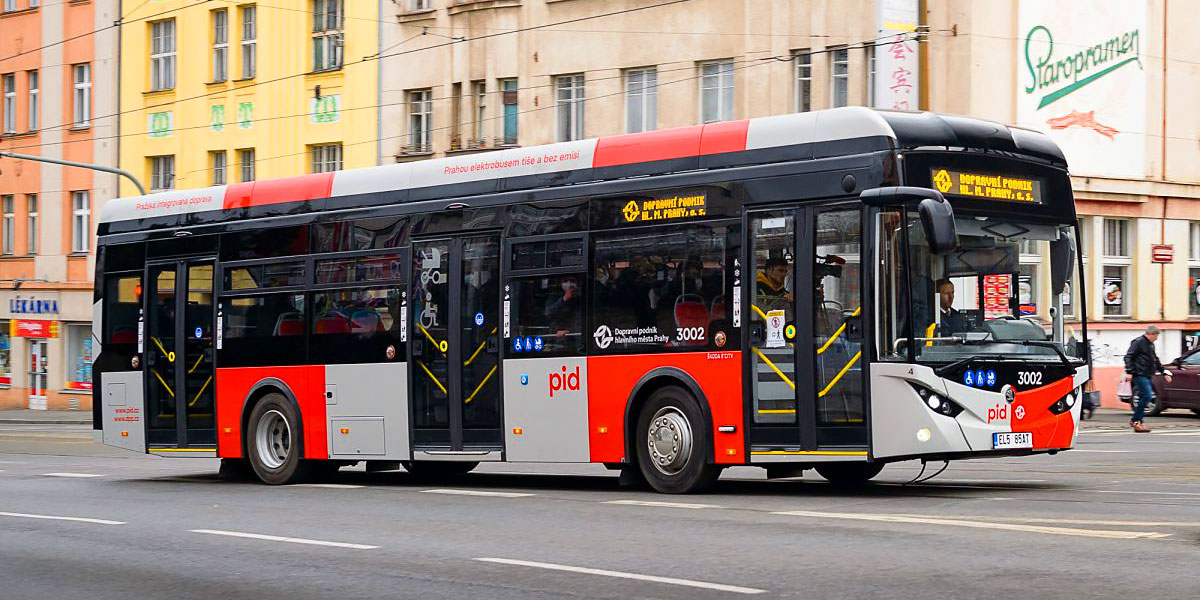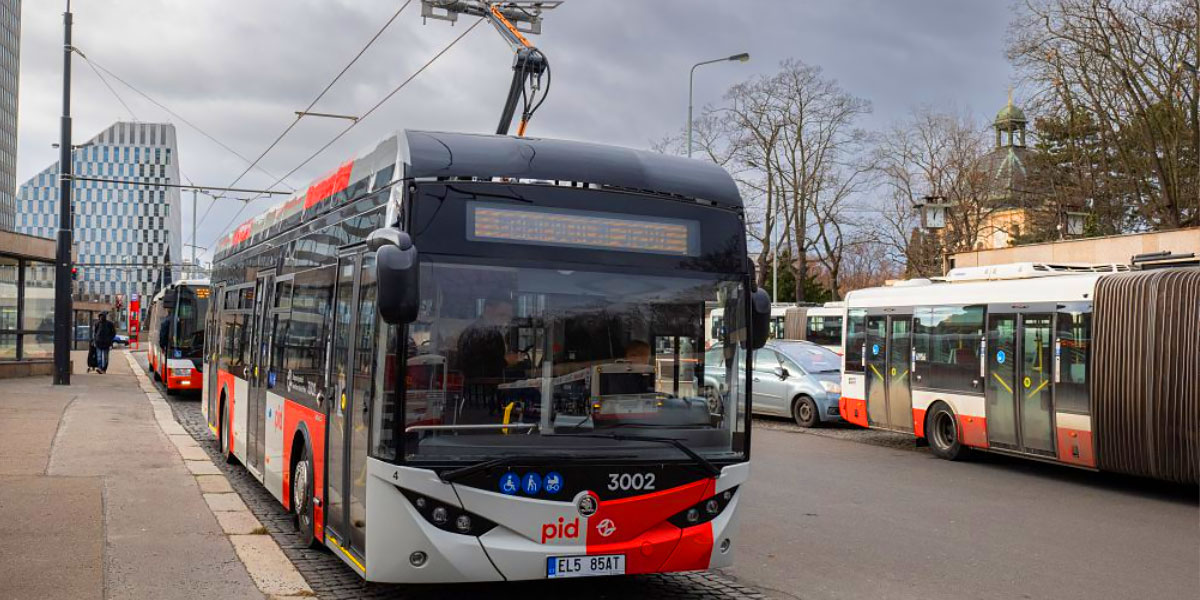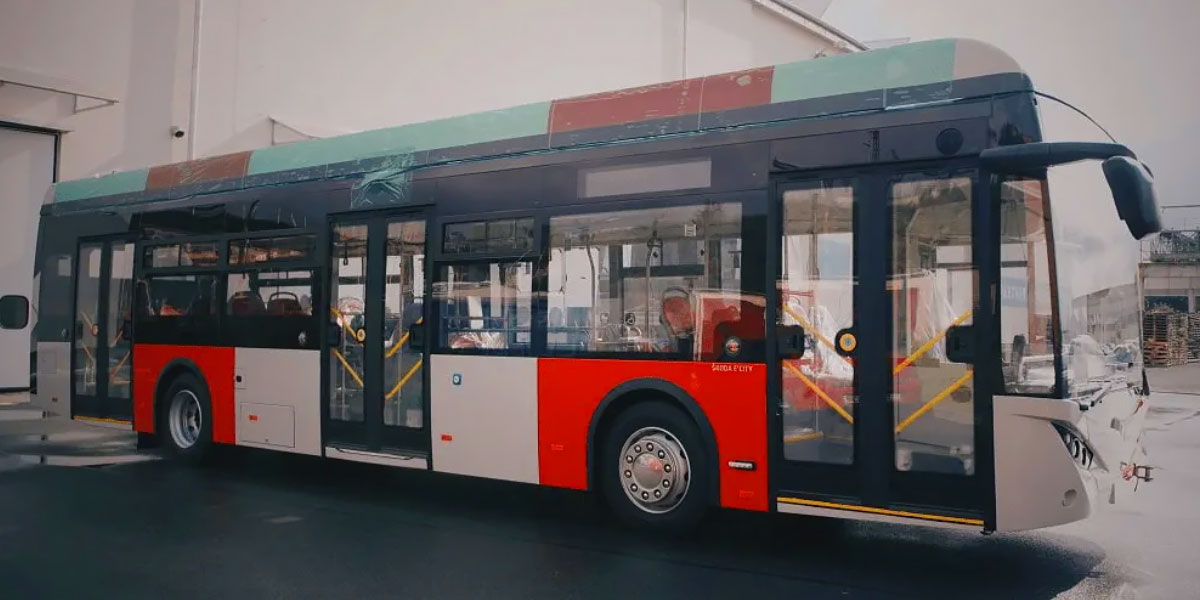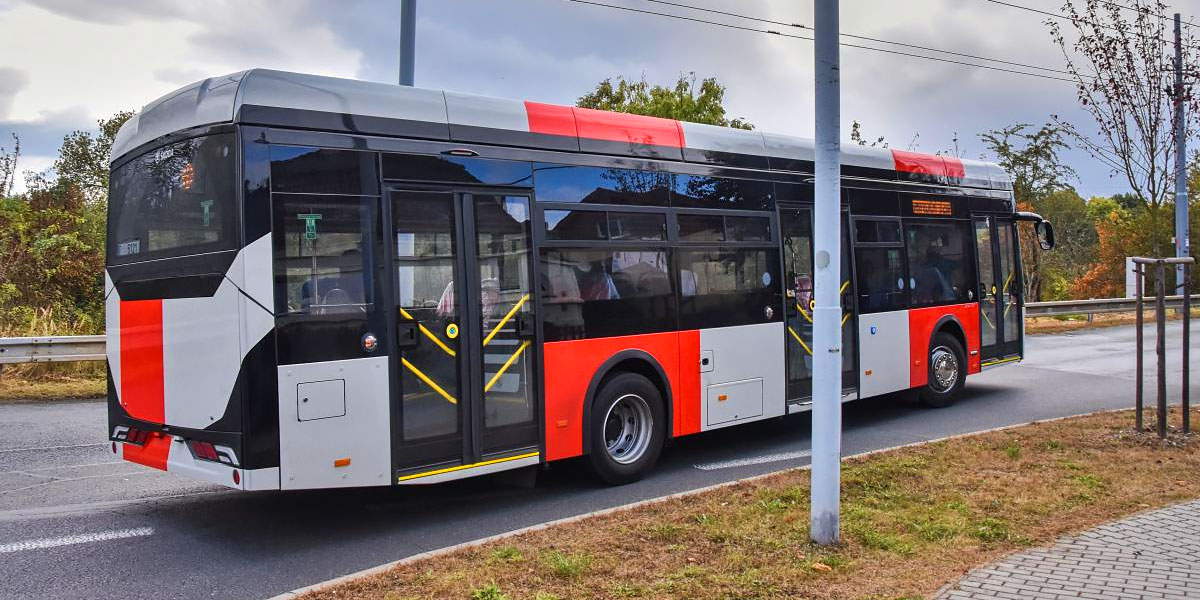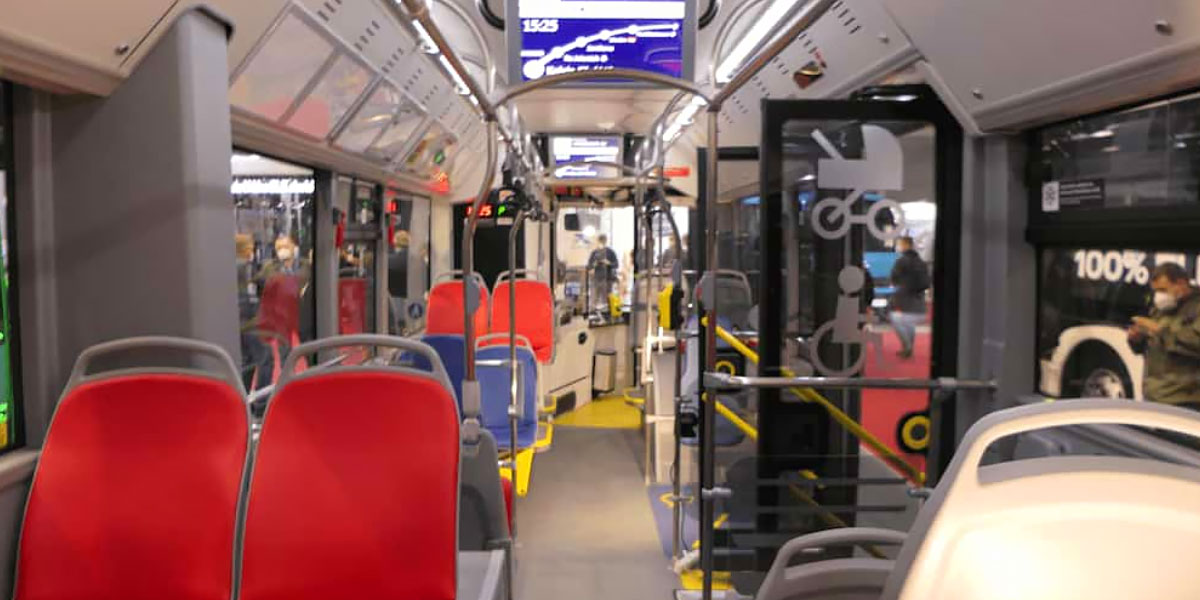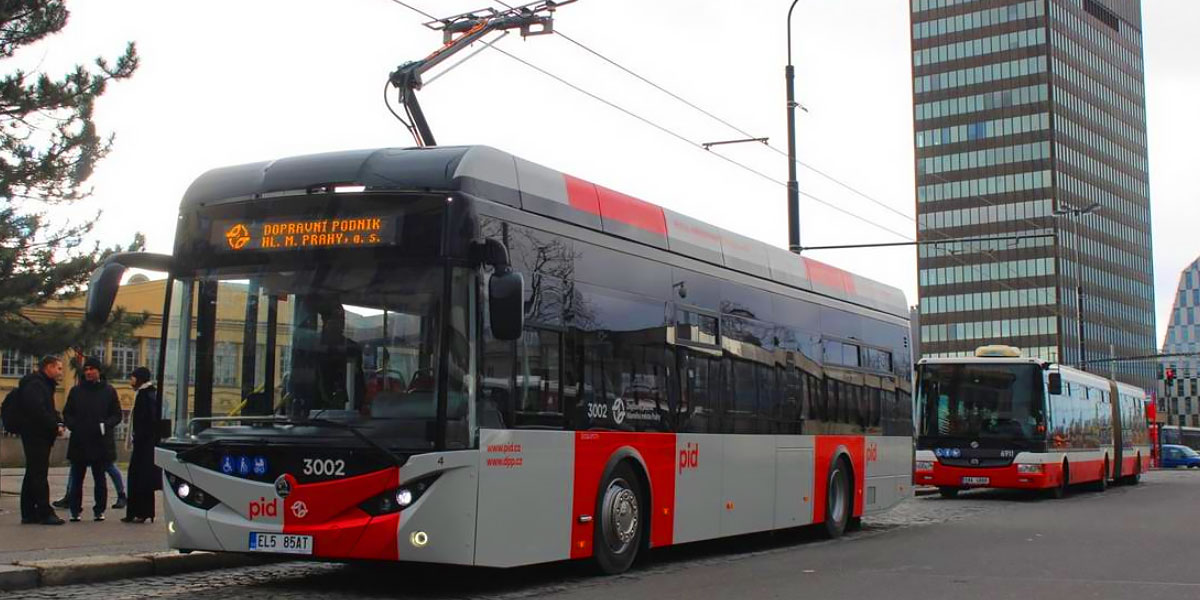Škoda E’City
User Rating: 4.29 / 5





What is the Škoda E’City?
The Škoda E’City is a Czech-built electric citybus launched in 2023 with a 260 kWh battery, 100 km (62 mi) range, and fast pantograph charging. It carries up to 69 passengers and costs $400,000 (€372,000/£316,000), offering quiet, zero-emission city transport.
Škoda E’City price:
US$ 400000 *
| manufactured in | Czech Republic |
| model year | 2023 |
| range (km) | 100 |
| battery (kWh) | 260 |
| bus type | citybus |
| passengers (qty) | 69 |
| seats (qty) | 28 |
* Minimum price set by the manufacturer, excluding taxes and additional options
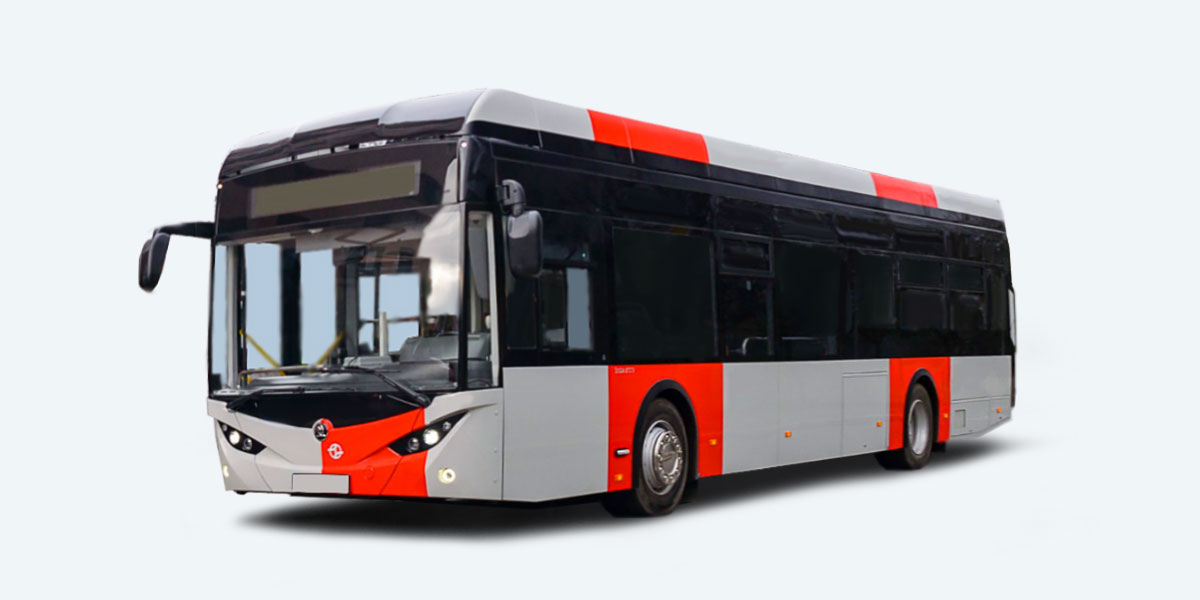
Exterior and Interior photos of Škoda E’City
Škoda E’City Review
Škoda E’City: Rewiring Urban Commutes with Quiet Efficiency
The Škoda E’City, a Czech-engineered electric citybus, is Škoda Transportation Group’s latest contribution to cleaner urban mobility. Built for short-haul operations with zero tailpipe emissions, this 12-meter workhorse rolled onto city streets in 2023 and is already clocking in real miles in Prague. It’s priced at $400,000 (€372,000/£316,000), and with capacity for 69 passengers, it’s optimized for mid-size fleet operators targeting sustainable upgrades.
- Manufactured in Czech Republic, the E’City is a result of Škoda’s collaboration with Temsa for chassis design and final build in Pilsen.
- Launched in 2023, it began operations after real-world testing on Prague routes like 154, 213, and 124.
- Marketed at $400,000 (€372,000/£316,000), it balances cutting-edge charging tech with accessibility and comfort.
- Positioned as a mid-size citybus, it’s perfect for operators needing sustainable solutions with moderate daily mileage.
Specs Breakdown: Where Škoda E’City Stands Technically
Battery: Silent Power with Smart Charging
At the core of the Škoda E’City sits a 260 kWh battery designed to do the job without fanfare. The rated 100 km (62 mi) range comes with a promise: that number holds even with air conditioning or heating in full swing. A pantograph system allows for daytime top-ups at 150 kW, using existing 600–750 V DC traction lines. At night, the plug-in option ensures slow, battery-friendly charging back at the depot.
- Battery capacity: 260 kWh
- Charging modes: Pantograph (150 kW), Plug-in (overnight)
- Charging voltage: 600–750 V DC
- Range on full charge: 100 km (62 mi)
Performance: Built for Steady Urban Duty
This isn't your 0-to-60 bragmobile—it’s a predictable urban performer. With an 80 km/h (50 mph) top speed and low-floor layout, the Škoda E’City caters to every passenger, regardless of mobility. It’s powered by Škoda’s own electric drivetrain, delivering a smooth, silent push that handles stop-start city traffic like it was born for it.
- Top speed: 80 km/h (50 mph)
- Passenger capacity: 69 total (28 seated)
- Drive type: Electric rear-axle propulsion
- Annual target mileage: 60,000 km (37,280 mi)
Currently, there’s one official variant on the market—optimized for Prague’s routes—but it’s built with modularity in mind for future regional customizations.
Exterior and Interior: Škoda E’City’s Practical Design Approach
Exterior
From the outside, the Škoda E’City is no show pony—but it’s functional and familiar. Its 12-meter (39.4 ft) frame fits snugly into city traffic and the PID color scheme makes it blend seamlessly with Prague’s public fleet. LED lights and well-integrated pantograph hardware keep things tidy up top.
Interior
Step inside, and it’s all about ease and airiness. You’ll find 28 comfortable seats, wide entryways, and a fully low-floor design. The saloon is fitted with a smart passenger information system, silent HVAC, and thoughtful ergonomic touches that make even short trips a bit more bearable.
Pros and Cons of Škoda E’City
Pros
- Fully zero-emission with quiet operation
- Fast pantograph charging with fallback plug-in option
- Low-floor layout enhances accessibility
- Designed for dense urban environments
Cons
- 100 km (62 mi) range may not suit long city lines
- Higher upfront cost compared to some diesel alternatives
- Lack of extended-range variants currently
- Performance reliant on available traction infrastructure
Conclusion: Škoda E’City Sticks to Its Electric Lane
The Škoda E’City doesn’t pretend to be anything but a smart, sturdy citybus. It does what needs doing—quietly, efficiently, and with fewer fumes than the dinosaurs it replaces. For cities serious about electric fleets, this bus isn’t a concept—it’s a commitment.
Manufacturer: Škoda Group
Related Video
Comparison:
When sizing up the Škoda E’City against rivals in the zero-emission citybus class, it sits in good company with the BYD K9, Mercedes-Benz eCitaro, Volvo 7900 Electric, and Solaris Urbino 12 Electric. These electric workhorses target dense urban routes, but differences in range, battery setup, charging methods, and pricing make each one a fit for slightly different fleet needs.
Range
The Škoda E’City delivers a modest 100 km (62 mi) of real-world range, holding steady even with active HVAC use. In contrast, the BYD K9 leads with up to 250 km (155 mi), while Volvo 7900 Electric and Solaris Urbino 12 Electric each manage around 200 km (124 mi). eCitaro typically tops out near 170 km (106 mi). So if ultra-long shifts are required, the E’City may need more frequent recharges unless paired with ideal route planning and infrastructure.
Acceleration and Speed
Top speeds align across the board. The Škoda E’City reaches 80 km/h (50 mph), similar to eCitaro and Volvo 7900. BYD K9 and Solaris Urbino can push to 90 km/h (56 mph), but in congested downtown environments, anything over 80 feels academic. Acceleration is smooth in all models thanks to instant electric torque, though the E’City prioritizes comfort over quick launches.
Power and Battery
The Škoda E’City runs on a 260 kWh pack—respectable but not the class leader. BYD K9 boasts a 324 kWh battery, while eCitaro and Solaris Urbino hover around 292 kWh and 240 kWh respectively. Volvo 7900 features a 200 kWh unit. What the E’City lacks in sheer battery size, it makes up for with efficient systems and opportunity charging during service hours.
Charging Time
The Škoda E’City uses a 150 kW pantograph, letting it recharge from trolley or tram infrastructure without leaving the loop. Others like the eCitaro and Volvo 7900 stick to plug-in depot charging—slower and less flexible during peak shifts. BYD K9 supports both, while Solaris Urbino offers pantograph and plug-in as options. For fleet flexibility, Škoda’s dual-mode system gives it a practical edge.
Price
At $400,000 (€372,000/£316,000), the Škoda E’City sits below eCitaro (~$600,000) and Volvo 7900 (~$500,000), and comes in close to Solaris Urbino and BYD K9 (~$450,000 each). Given its build quality and onboard tech, Škoda’s pricing offers solid value for cities seeking affordable electrification without trimming on tech or comfort.
F.A.Q.:
What is the driving range per charge?
The Škoda E’City offers a reliable driving range of 100 kilometers (62 miles) on a single charge, even when the heating or air conditioning systems are running.
How long does it take to recharge the battery?
The 260 kWh battery supports fast charging via a 150 kW pantograph and overnight depot charging through a plug-in, optimizing both uptime and battery health.
How many passengers can this electric citybus carry?
The Škoda E’City has a total passenger capacity of 69 people, including 28 seated and the rest standing comfortably.
What is the top speed of the electric bus?
The Škoda E’City can reach a top speed of 80 kilometers per hour (50 miles per hour), which is ideal for urban transit routes.
What is the total battery capacity?
The electric bus is equipped with a 260 kilowatt-hour battery, enabling short-haul city operations with minimal emissions.
Where is this electric citybus manufactured?
The Škoda E’City is built in the Czech Republic, with electric components supplied by Škoda and the chassis co-developed with Temsa of Turkey.
When did it first enter the market?
The Škoda E’City officially launched in 2023 after a successful test deployment across multiple Prague city lines starting in early 2022.
What is the price of the vehicle?
The Škoda E’City is priced at $400,000, which is approximately €372,000 or £316,000 based on current exchange rates.
What charging systems does it use?
The bus supports dual-mode charging: fast daytime pantograph charging using 600–750 V DC traction power, and slower plug-in charging at night.
Does the bus have a fully low-floor design?
Yes, the Škoda E’City features a fully low-floor design to ensure easy access for all passengers, including those with mobility challenges.


